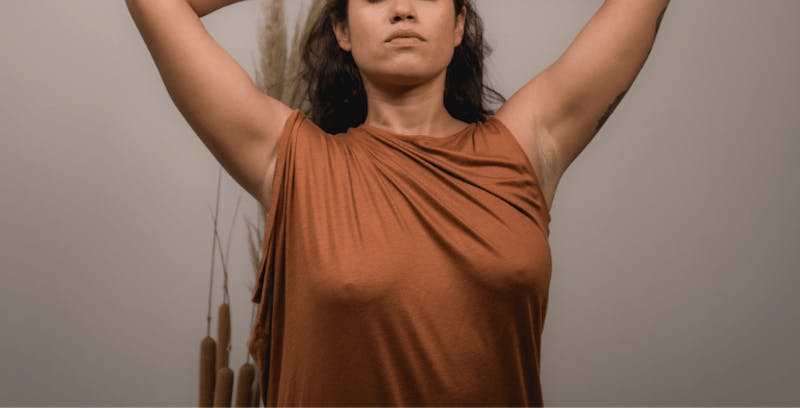
Breast cancer is one of the most common types of cancer affecting women worldwide. While the survival rates for breast cancer have improved significantly over the years, the treatment options often involve mastectomy or breast-conserving surgery, which can lead to the loss of the nipple and areola. This loss can significantly affect a woman’s self-esteem and body image, decreasing her overall quality of life. Nipple and areola reconstruction is a procedure that aims to restore the appearance of the nipple and areola, providing women with a sense of completion and wholeness after breast cancer treatment and breast reconstructive surgery. It’s the final step to completing the look of natural-looking breasts for breast reconstruction. There are many different techniques and procedures that can be used to achieve the desired outcome in this process.
This article will discuss the various techniques used in nipple and areola reconstruction, along with their benefits and drawbacks.
What is Nipple and Areola Reconstruction?
The nipple and areola are essential parts of a woman’s breast. They play a significant role in the appearance of the breast, and their loss can profoundly affect a woman’s self-esteem and body image. Nipple and areola reconstruction is incredibly important for bringing a sense of completion and fulfillment to the breast reconstruction journey. It can help restore a woman’s confidence and sense of femininity after breast cancer treatment. It also helps improve the overall aesthetic outcome of breast reconstruction surgery.
Nipple and areola reconstruction is a procedure that recreates the nipple and areola on a breast that has undergone mastectomy or breast-conserving surgery. The procedure can be performed simultaneously as breast reconstruction or separately. The goal of nipple and areola reconstruction is to restore the appearance of the breast, providing women with a sense of wholeness and completion after breast cancer treatment.
Primary breast reconstruction surgery typically doesn’t include nipple and areola creation since some healing of the tissues must take place in order to properly implement the techniques needed. Nipple and areola reconstruction may be performed near the end of the reconstructive process in order to ensure success and ideal cosmetic outcome.
Who is a Good Candidate?
Women who have undergone mastectomy or breast-conserving surgery and are interested in restoring the appearance of their nipple and areola are candidates for nipple and areola reconstruction. The decision to undergo the procedure is personal and should be made in consultation with a plastic surgeon. A surgeon will examine your case, understand the outcome you’re hoping for, and ensure you’re healthy enough to undergo surgery. During your consultation, your surgeon will also discuss what techniques will be used to help you get your desired look.
Different Nipple and Areola Reconstruction Techniques
There are several techniques used in nipple and areola reconstruction. Sometimes multiple techniques will be used to achieve the desired effect. Most commonly, nipple and areola reconstruction involves rebuilding the nipple from the patient’s own skin and then reconstructing the areola with tattooing or skin taken from other areas of the body.
Below is a breakdown of the most common techniques used in nipple and areola reconstruction.
Skin Grafting
Skin grafting involves taking a small piece of skin from another part of the body and using it to create the nipple and areola. The skin graft is typically taken from the inner thigh or buttocks, where the skin is similar in color and texture to the nipple and areola. The skin graft is then placed onto the breast and shaped to create the nipple and areola.
Tattooing
Micropigmentation tattooing completes the aesthetic look of the nipple and areola area. This is typically the last step once nipple and areola reconstruction has been completed. Once healed from the procedure, a color match will be done to make sure the patient is happy with the results and that the outcome looks natural. Tattooing provides a better color match and a more natural appearance.
The tattooing procedure simulates the color, shape, and texture of the nipple and areola and is performed similarly to a traditional tattoo process. Micropigmentation tattooing is a quick process that’s an outpatient procedure and doesn’t create any additional scarring.
Like any other tattoo, the pigment may fade and require touch-ups. However, this procedure to add the finishing touches is typically very long-lasting.
Local Flap Reconstruction
Local flap reconstruction involves using tissue from the breast or surrounding area to create the nipple and areola and form a mound. This technique is more invasive than skin grafting and tattooing but can provide a more natural-looking result.
Benefits of Drawbacks of Different Reconstruction Techniques
Each procedure technique has its own set of benefits and drawbacks. The most common of each method are outlined below.
Skin Grafting
Benefits:
- It provides a permanent solution to nipple and areola reconstruction.
- It can create a more natural-looking result compared to tattooing.
- It can be done at the same time as breast reconstruction surgery.
Drawbacks:
- Skin grafting requires additional surgery to harvest the skin graft.
- This can lead to scarring at the donor site.
- It may not be suitable for women undergoing radiation therapy, as radiation can affect healing.
Tattooing
Benefits:
- Tattooing is less invasive than skin grafting and local flap reconstruction.
- It can create a realistic appearance of the nipple and areola.
- It is a quick procedure that can be done in the doctor’s office.
Drawbacks:
- It’s not a permanent solution and may need touch-ups over time.
- It may not be suitable for women with certain skin conditions.
- It may not provide a natural-looking result for women with significant breast asymmetry.
Local Flap Reconstruction
Benefits:
- It can provide a more natural-looking result compared to skin grafting and tattooing.
- It uses tissue from the breast or surrounding area, minimizing the risk of complications.
- It can be done at the same time as breast reconstruction surgery.
Drawbacks:
- It is a more invasive procedure compared to tattooing.
- It requires a longer recovery time compared to tattooing.
- It may not be suitable for women with limited tissue availability.
The Bottom Line
The different techniques used in nipple and areola reconstruction each have their own set of benefits and drawbacks, and the choice of technique should be made in consultation with a plastic surgeon.
Skin grafting, tattooing, local flap reconstruction, and 3D nipple tattooing are all viable options for nipple and areola reconstruction. Each technique can provide a natural-looking result when performed by an experienced plastic surgeon. With the help of this procedure, women can regain their sense of wholeness and feel more comfortable with their bodies after breast cancer treatment.
Ready to get started? Leif Rogers, MD, is an Ivy League-educated, board-certified plastic surgeon and a standing member of the American Society of Plastic Surgeons. If you’re considering nipple and areola reconstruction, get in touch with his team to schedule a consultation today.


